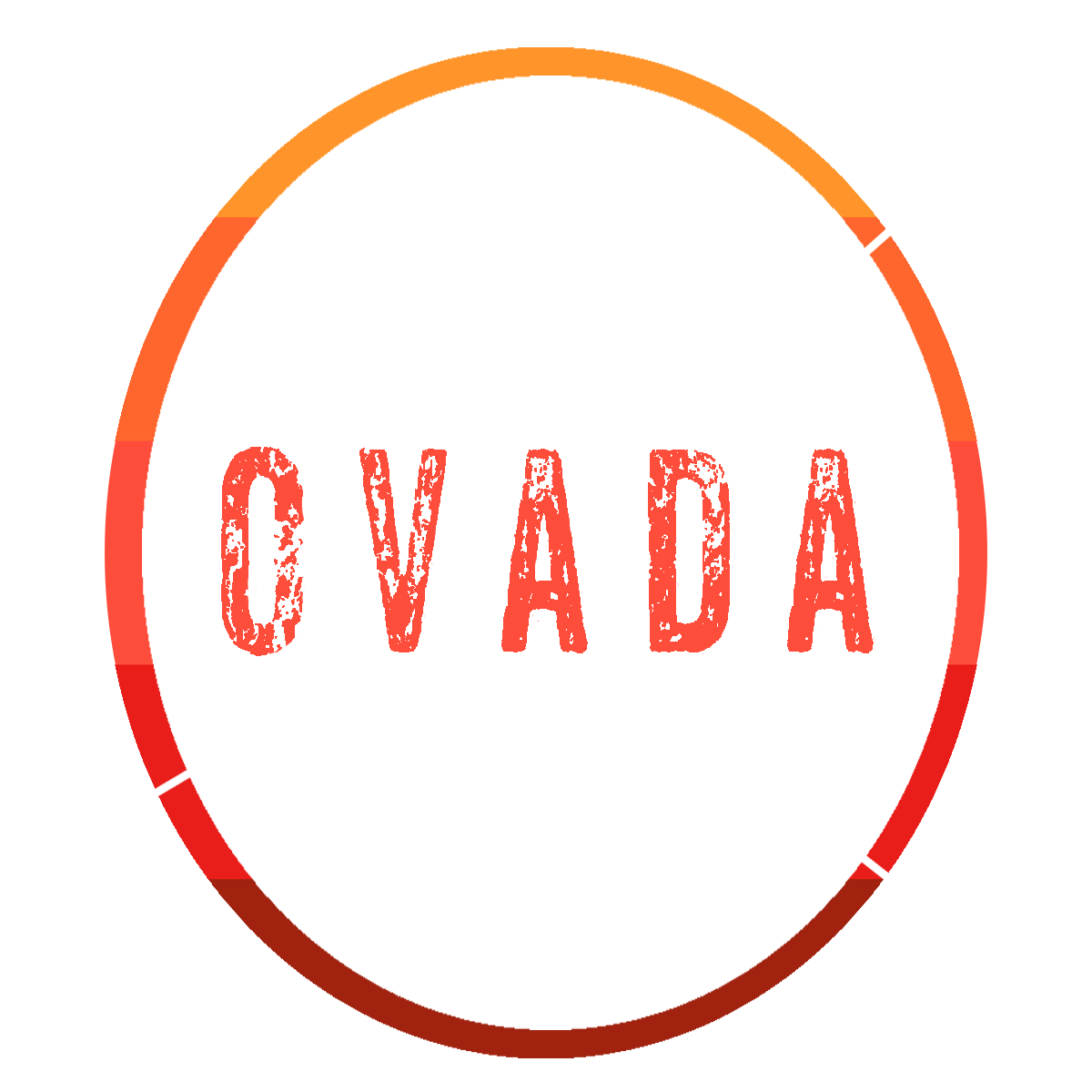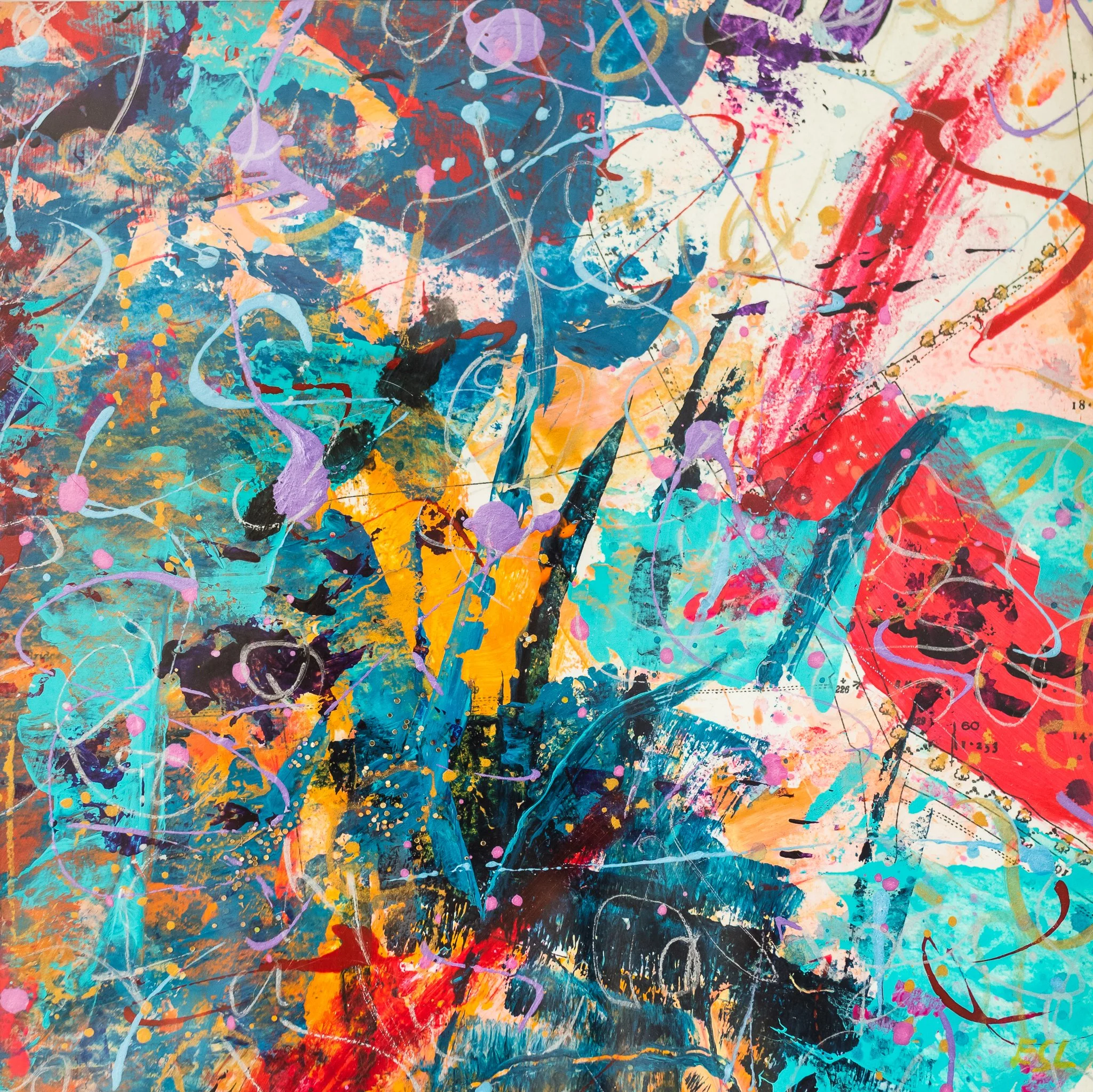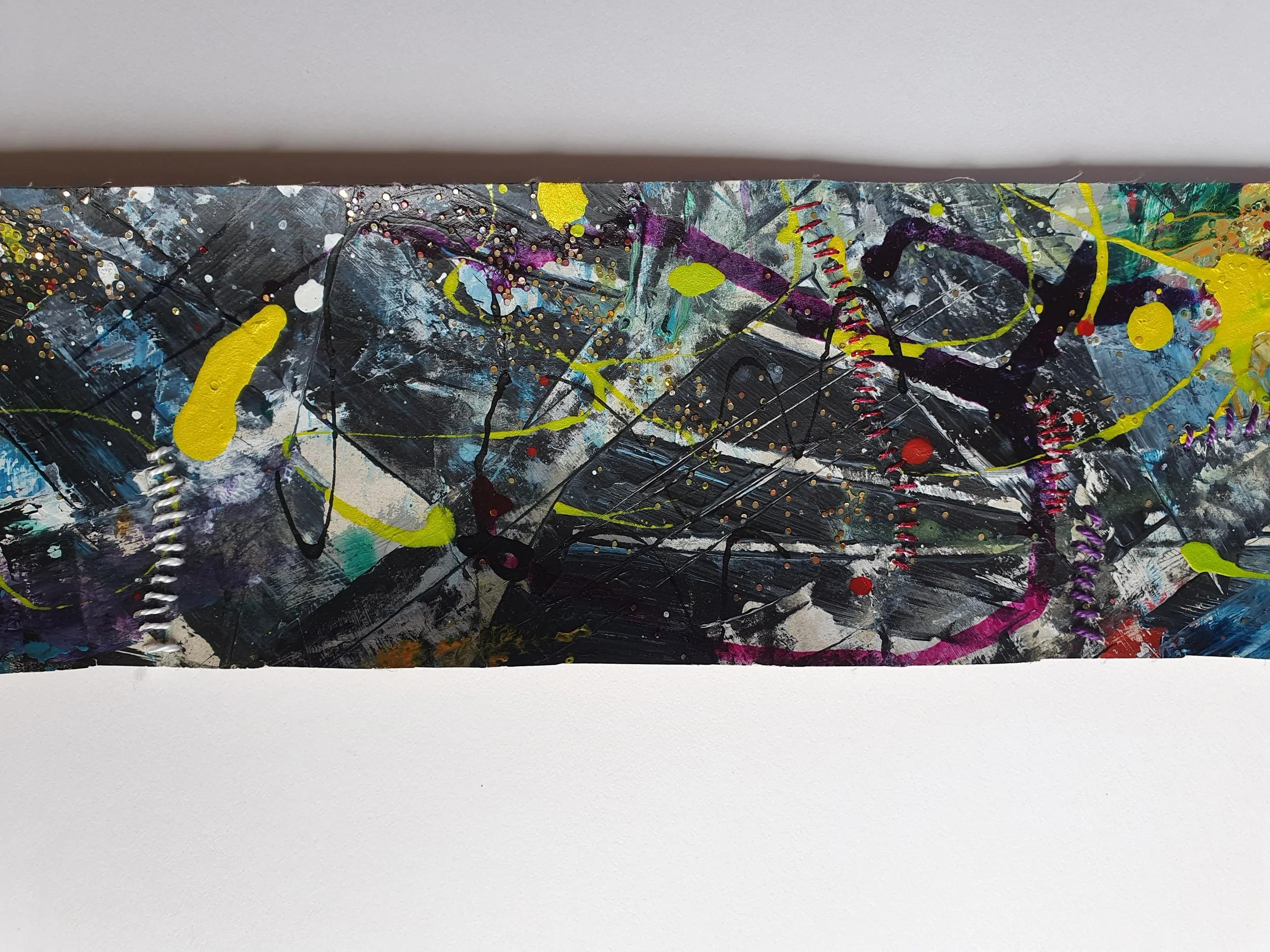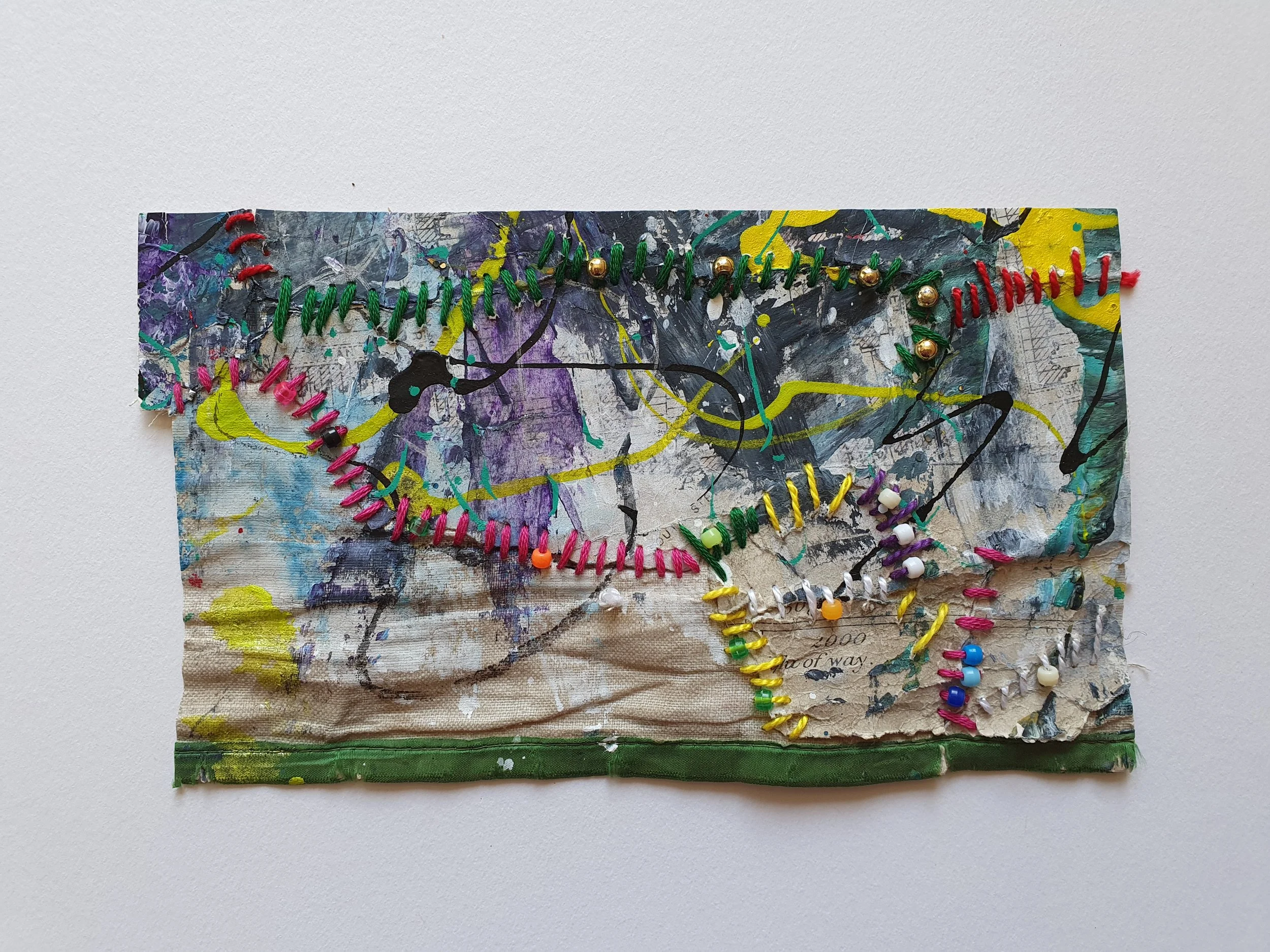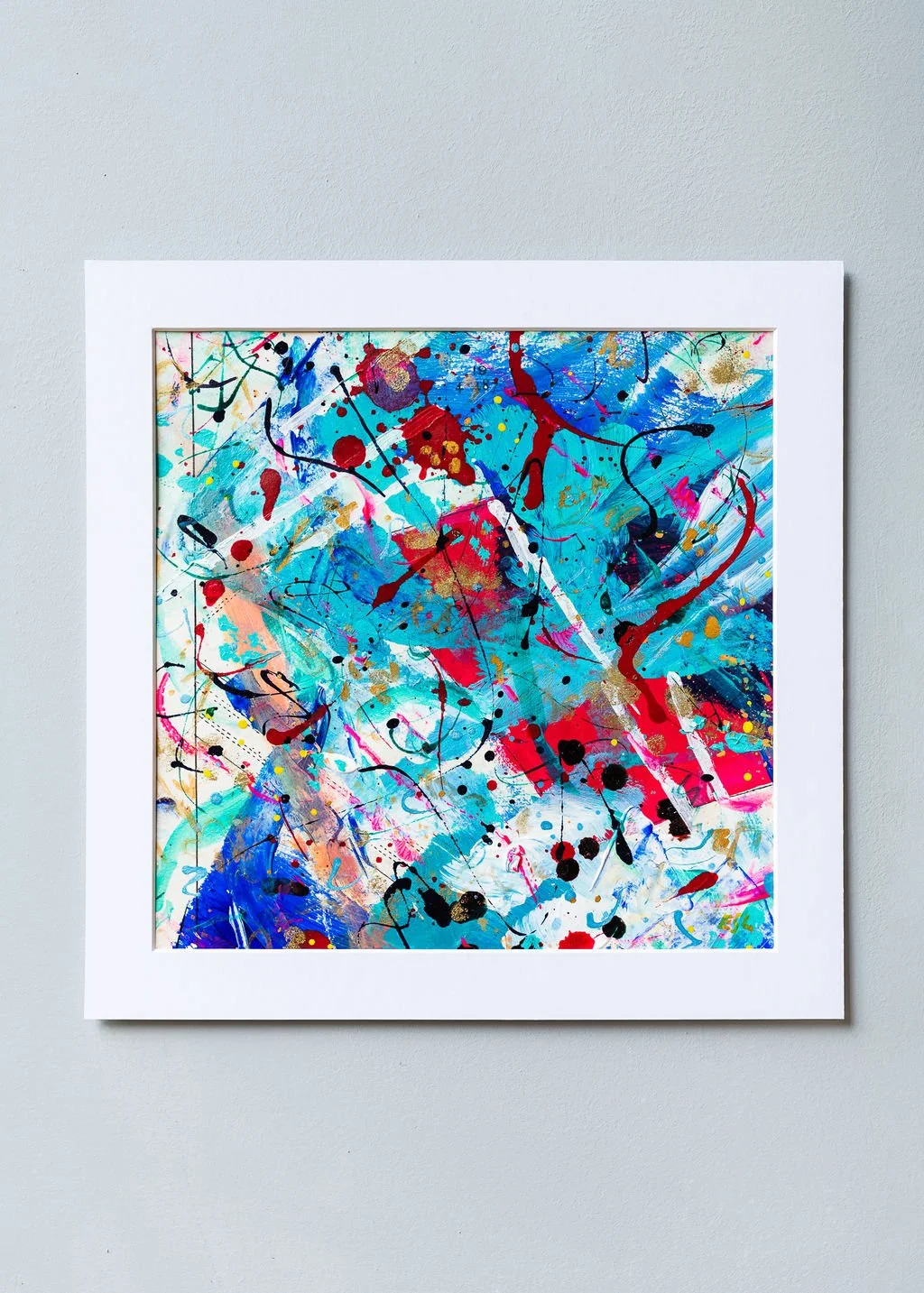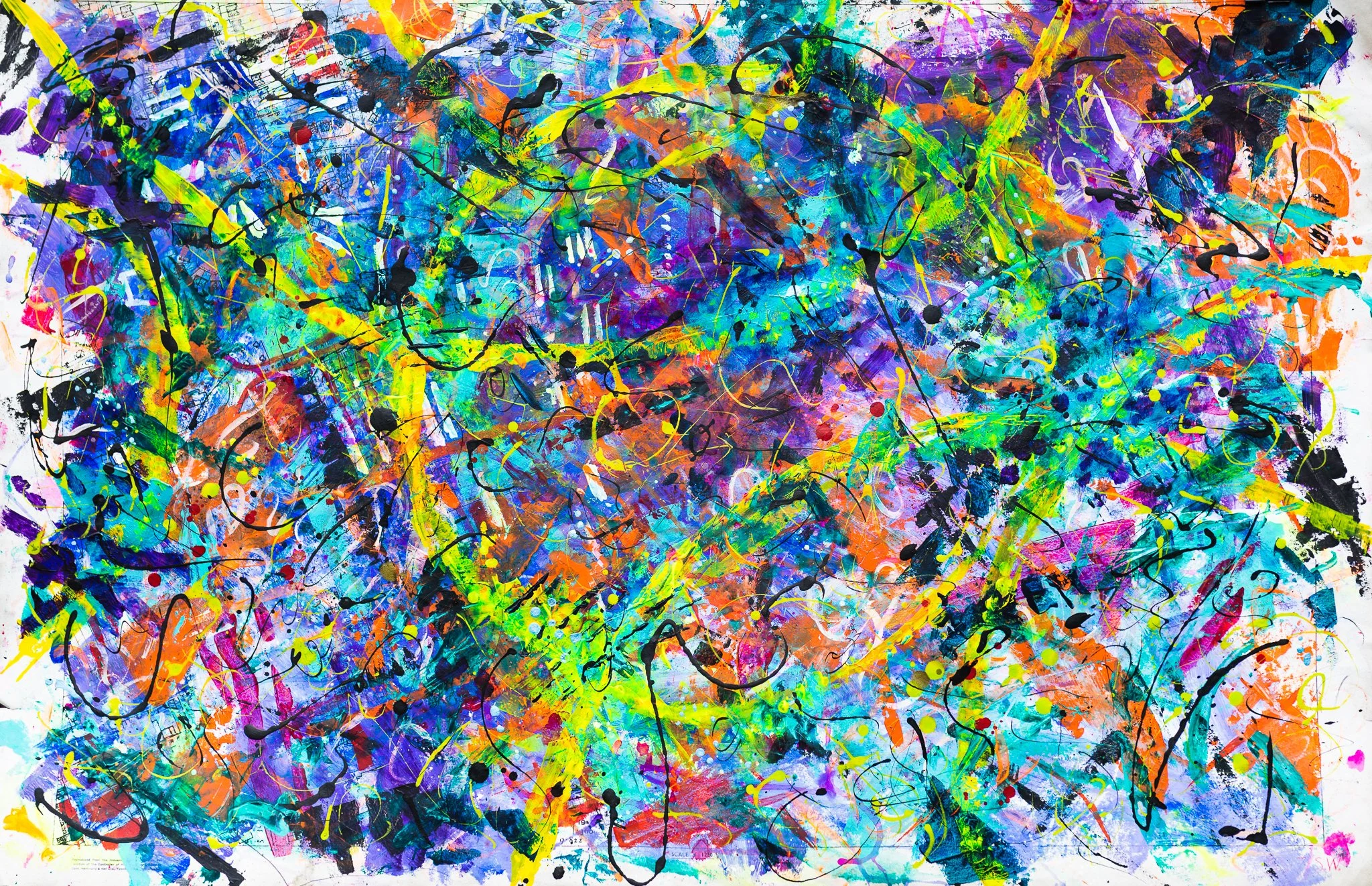OVADA Associates Feature Artist: Lizzie Shannon-Little
Associate Q&As with Lizzie Shannon-Little
Introduction
I’m an abstract painter and mixed media artist. My works are explorations in connection and identity, colour and bold mark making. My art is vibrant, playful, and kinetic.
An intuitive use of bold colour is central to my practice. I constantly experiment with different materials, including acrylics, inks, collage, textiles, found objects, and even glitter! Through the applications of layers and both intentional and instinctive marks, the composition of my works evolve as part of my creative process, producing distinctive textured surfaces that are both fluid and dynamic. I strive to make my work as low impact as possible to the environment. I use reclaimed materials, recycled paper and collage fabrics, and second-hand paints and textiles. And I embrace the unpredictability of those materials as part of the production process, enjoying the serendipity of spontaneous use of different tools and media.
I am interested in the connectedness we feel to ourselves, to the spaces we inhabit, our bodies and identities, and with each other. My most recent collection explores emotions around a sense of belonging to a place, and the transience of our identities in a space over time. These works use reproduction vintage maps of Oxfordshire as their canvases, with my creative process directly responding to the cartography they contain.
As an emerging artist, I was selected for the 2022 New Platform Art programme cohort through Parker Harris. I am Trustee for the Arnolfini in Bristol and WOA Gallery in Oxfordshire.
Oxfordshire Abstractions, Lizzie Shannon-Little (2022)
What are you currently working on?
I am currently pushing further my experimentation with different materials as well as investigating ideas about personal history and connectedness to the self. The introduction of stitching into my art - to embroider the broken lines and fractures in the paintwork of the old, reclaimed maps that I paint on - examines the transformative power of thread. It’s ability to take a material that is discarded or perceived as broken and remake it into something new. It’s capacity to fix and join, to connect and mend what was broken, to adorn and decorate that break, to celebrate its imperfection. Drawing on my very first creative practice as a child, learning dressmaking skills from my mum, the creative process in the development of these new artworks is also a personal journey into my own evolution as an artist. A re-connecting with my formative years as a creative and an exploration of when and how someone identifies as an artist.
Where do you create work?
I work at home. I have a studio space in the garden of my house.
What are you hoping to achieve over the next year?
I am working on a new collection of work, which I reference in an earlier response, where I return to the use of stitching from my childhood to create something new from the old pieces that are almost a by-product of my previous practice. I would love to show these in a solo exhibition or as part of a group exhibition about the beauty in the broken and discarded. Separately, I have another idea that I wish to develop around the representation of the female body. Using the outlines and key features of neolithic and palaeolithic representations of womanhood, in the talismans and sculptures of the time, I want to examine the modern perception of the female body and our identity as women through how our bodies are perceived. Again, I would love to create a full body of work in this and join up with some other artists looking at similar ideas to run workshops and an exhibition. This might take me beyond the year horizon! Other ambitions I have include co-creating with peers a weekend residency focused on moving along our practices and our professions by bringing individual issues/challenges (practical, creatively, mindset, materials, anything!) to share and help resolve.
Left: Work in Progress, Lizzie Shannon-Little (2023) Right: Frosty Morning II, Lizzie Shannon-Little (2022)
Describe the last time you felt inspired
Literally just as I was writing this, I got distracted into searching out new imagery for the earliest representations of femaleness, and stumbled across Venus of Hohle Fels (please Google her!). It is a figurine made of mammoth ivory that was unearthed in 2008 in Hohle Fels, Germany, dated to 40,000 and 35,000 years ago and now the oldest undisputed example of a depiction of a human being. I immediately wanted to get imagery of her in order to trace the lines of the figure, thinking about modern interpretations and the reflect on the depiction of femaleness, so extreme and emphasising of sexuality and fertility. I find these early sculptures so fascinating, and the fact that they are invariably of the female form and not male so interesting – the ideas about life, nurturing, survival, reproduction, and a community’s and family’s longevity represented in the female body.
How does Associate membership benefit you?
I am thrilled to be taking part in the MOOD exhibition, and this is bringing me into contact with lots of artists in Oxford and the surrounding area that I have not met before. Particularly working in different media, pushing bold ideas and questioning what art is. I think OVADA is quite different in this regard from other arts organisations in Oxfordshire which can be conventional, and I think this is really valuable to me – to push me as an artist and help me think critically. I’d like to be much more involved in OVADA and the benefits of being an Associate.
Summertown, Lizzie Shannon-Little (2022)
How do you feel the arts benefit society?
How do they not? The arts touch every single part of our lives, adds the colour and joy to our experience as humans, allows us to express ourselves, record and process our experience, join together in shared creativity, and preserves and develops cultures. It is the importance of play, creating, ideas, exploration, and experimentation that the arts bring us, that no other form can uniquely provide society.
You can see more of Lizzie’s work at:
www.lizzieshannonlittle.com/ www.instagram.com/eshannonlittle/
